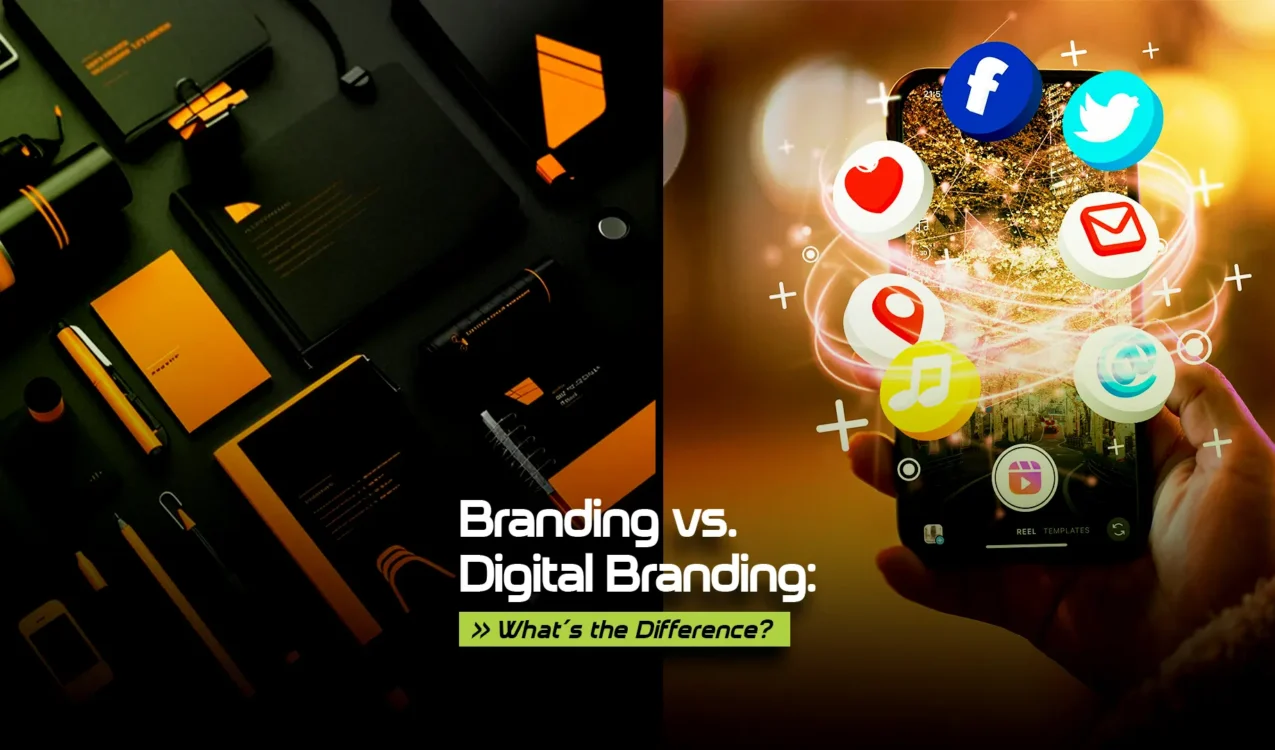In today’s business world, the term “branding” often gets used interchangeably with “digital branding.” But are they really the same? Absolutely not.
While both aim to shape how your audience perceives your brand, the channels, strategies, tools, and impact differ significantly. For businesses ready to grow in the digital-first era, understanding the difference between traditional branding and digital branding is not just helpful — it’s essential.
At CG iNK – Best Digital Brand Building Agency in India, we bridge the gap between timeless brand values and modern digital experiences. Let’s break down what sets digital branding apart — and why it’s the future of powerful, scalable brands.
1. Traditional Branding: Setting the Foundation
Traditional branding is the root of your identity — the visual and emotional story that defines your company, product, or service in the physical world.
🔹 Core Elements of Traditional Branding:
- Brand name, logo, and tagline
- Packaging, print media, and signage
- Brand tone, voice, and positioning
- Offline touchpoints like events, in-store experience, business cards
💡Think Coca-Cola’s red logo, Nike’s “Just Do It,” or the way a luxury brand feels when you walk into their showroom — that’s traditional branding in action.
But in a world where customers are online more than ever, traditional branding alone won’t cut it. Enter: Digital Branding.
2. Digital Branding: Building Perception in the Online World
Digital branding is how your brand lives, breathes, and interacts online. It’s about creating consistent and engaging brand experiences across websites, social platforms, digital ads, and content.
It’s not just about how you look online — it’s how you connect, communicate, and convert your digital audience.
🔹 Key Components of Digital Branding:
- Website design & UX
- Social media presence and content tone
- Online reviews and reputation management
- CGI and motion graphics for storytelling
- Search engine presence (SEO and SEM)
- Email, WhatsApp, and mobile app branding
💡At CG iNK, we craft digital identities that go beyond aesthetics — delivering function, emotion, and impact across every online touchpoint.
3. Channels: Offline Reach vs. Online Influence
Traditional branding relies on mass media and physical experiences — TV ads, radio, billboards, and packaging.
Digital branding, on the other hand, spans multiple interactive platforms such as:
- Instagram, LinkedIn, and YouTube
- Google (via SEO, PPC, Google My Business)
- E-commerce platforms
- Mobile apps and digital communities
- Influencer and user-generated content (UGC)
📊CG iNK ensures your digital brand not only reaches but resonates with the right audience across every relevant channel.
4. Interaction: One-Way Messaging vs. Real-Time Engagement
Traditional branding is static and one-way — it speaks to the audience, not with them. Once a TV ad or print campaign is out, there’s no room for real-time feedback or conversation.
In contrast, digital branding thrives on two-way interaction:
- Comments, DMs, shares, and saves
- Polls, quizzes, and live sessions
- Feedback through reviews or chatbot queries
- Community engagement through reels and stories
💬CG iNK builds digital brands that listen, respond, and evolve — creating a loyal and engaged customer base.
5. Measurement: Assumptions vs. Real-Time Analytics
One of the biggest advantages of digital branding is the ability to track and measure everything — in real-time.
With traditional branding, it’s often hard to measure impact without expensive studies. But with digital branding:
- You see which posts convert
- You track how users behave on your site
- You know exactly which ad brought which lead
📈CG iNK provides real-time dashboards and campaign performance insights so you know exactly what’s working and what’s not.
6. Agility: Fixed Campaigns vs. Adaptable Messaging
Traditional branding campaigns take months to plan and execute — and are hard to tweak once launched.
Digital branding, however, is:
- Flexible: Can pivot instantly to trends or feedback
- Fast: Launch campaigns in days, not weeks
- Relevant: Real-time content keeps the brand relatable
🎯CG iNK uses real-time trend monitoring, A/B testing, and agile content creation to keep your brand fresh, relevant, and top-of-mind.
7. The Synergy: Blending Both for a Cohesive Brand
It’s not a battle between traditional and digital branding — it’s about integration. A powerful brand uses traditional values and digital storytelling to create a consistent brand narrative across platforms.
🔁 At CG iNK, we help brands:
- Translate traditional brand identities into digital experiences
- Maintain consistency across print and digital assets
- Modernize legacy brands with next-gen design, UX, and content
Conclusion: Digital Branding Is No Longer Optional — It’s Essential
If traditional branding is the soul of your brand, digital branding is how that soul is experienced by the modern customer. It’s how your brand speaks, looks, feels, and performs across every online touchpoint.
And in a digital-first world, this is what makes or breaks your success.
📢Looking to upgrade your brand for the digital era? Partner with CG iNK – the agency trusted for delivering creative excellence and digital growth.
✅ Build Your Digital Brand with CG iNK
📩Email:cgink.in@gmail.com
📞Call/WhatsApp: +91-9057137131
🌐Website:www.cgink.in





